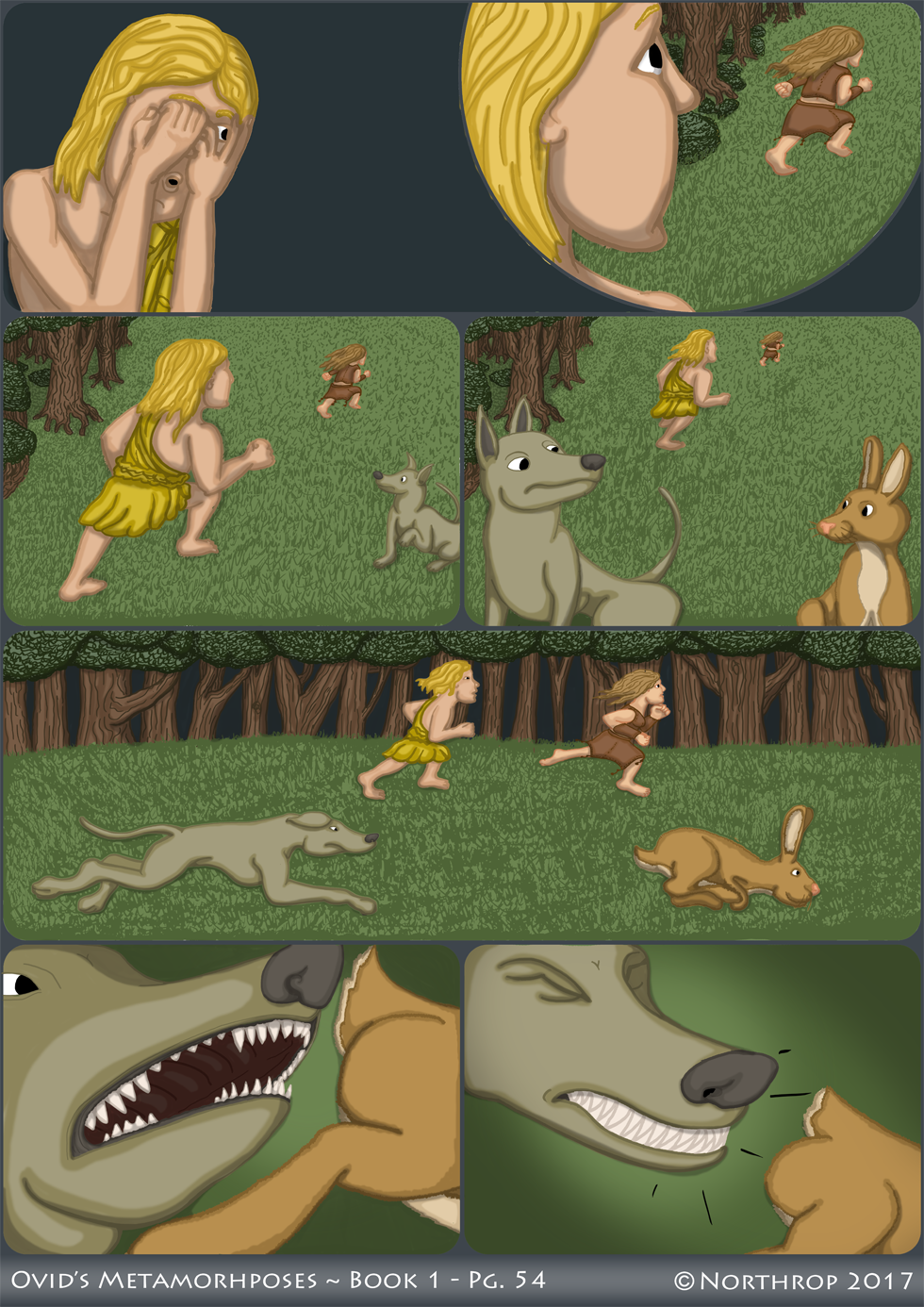Met. 1.525-42 – the Hound and the Hare
Plura locuturum timido Peneia cursu
fugit cumque ipso verba imperfecta reliquit,
tum quoque visa decens. nudabant corpora venti,
obviaque adversas vibrabant flamina vestes,
et levis impulsos retro dabat aura capillos;
aucta fuga forma est. sed enim non sustinet ultra
perdere blanditias iuvenis deus, utque monebat
ipse Amor, admisso sequitur vestigia passu.
ut canis in vacuo leporem cum Gallicus arvo
vidit, et hic praedam pedibus petit, ille salutem,
alter inhaesuro similis iam iamque tenere
sperat et extento stringit vestigia rostro,
alter in ambiguo est an sit comprensus et ipsis
morsibus eripitur tangentiaque ora relinquit;
sic deus et virgo est, hic spe celer, illa timore.
(Met. 1.525-42)
Planning to say more, Peneus’ daughter fled him on her fearful run
and left him with his unspoken words.
Then also she seemed beautiful. The winds made her body appear nude,
and her clothes flapped breezes,
and the light breeze pulled her battered hair behind her;
Her flight increased her beauty. But indeed the young god did not continue
wasting his sweet words on her, and as Love himself had warrned,
his path followed hers.
Like when a Gallic hound sees a hare in an open field,
and he seeks his prey on foot, and it seeks safety,
the one now hopes get the the other in its grip
and presses the chase with his muzzle outstretched,
the other is unsure whether it might have been captured and
leaps free of the jaws and leaves behind the mouth as it touches;
thus are the god and the maiden; he made faster by hope, she by fear.
Last time we had a real talk-y page; this time, we’re going dialogue-free! I considered adding text boxes with Ovid’s description of the hound and the hare, but since this scene is introduced by Apollo’s silence and Daphne’s refusal to listen (“she left him wanting to say more” ll. 525-6), I decided it was best to let the imagery speak for itself. Moreover, I have eschewed copying over similes* in the past; you can read more about my thinking on the matter here. Suffice to say, though, that the purpose of similes is to build imagery; adding words to an image-based medium would just be guilding the lily.
This simile is particularly salient for understanding Ovid’s ‘erotic chase’ (a polite term for ‘rape’) narratives. I’ve mentioned Gregson Davis and his study of love and hunting in the Metamorphoses before (Davis 1983). He points out that Ovid systematically figures erotic attraction as a hunting dynamic: the lover hunts the beloved. This is a dynamic that comes from the genre of elegy, a type of poetry that frequently uses violent metaphors for love. It might even be the origin of our modern pop singer’s insistence on love as a battlefield. (don’t believe me about the similarities between ancient elegy and modern pop? see if you can tell the difference between Ovid and Taylor Swift: https://www.buzzfeed.com/hciclassics/taylor-swift-or-roman-love-poetry-1b1h4?utm_term=.vgyJBRrXK#.rfgGjRZod). It’s a dynamic that may make modern readers squimish to consider, but it is not one totally alien to modern erotics.
You’ll hopefully notice that this scene is a continuation of the rhetoric Apollo used in his persuasive speech to Daphne, where he also compared their predicament to predators and prey. This simile is essentially Ovid’s confirmation of this dynamic. It’s not quite what Apollo wanted, however; remember that the god tried to convince her that love was different from hunting. Thus, Ovid also contradicts Apollo, even while echoing his imagery.
If you’re wondering what a gallic hound is (because I sure was), it’s a breed of dog originating in Gaul (roughly modern France) that seems to be an ancestor of modern greyhounds. In ancient depictions, they look rather similar to a greyhound, expect perhaps more stocky. This is how I drew it anyway, relying on ancient depictions with details from photos of greyhounds. It’s actually an interesting question to trace ancient dog breeds. I’m somewhat looking forward to/dreading the catalogue of dogs in Book 3 (Met. 3.206-25)…
This story is gearing up for the exciting conclusion! Be sure to check back soon for the next page!
_____________________
* The technical term for poetic comparisons.

Discussion ¬